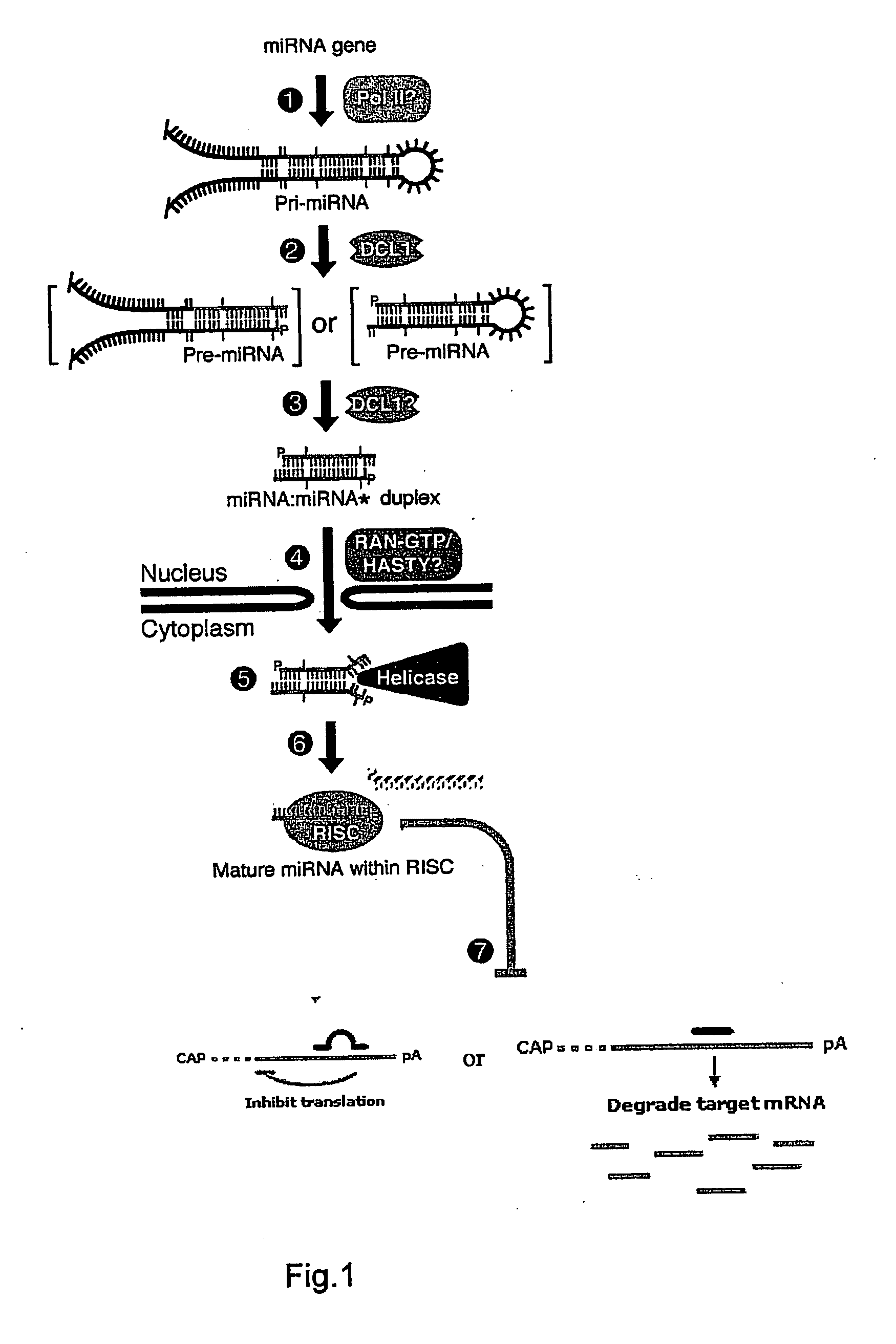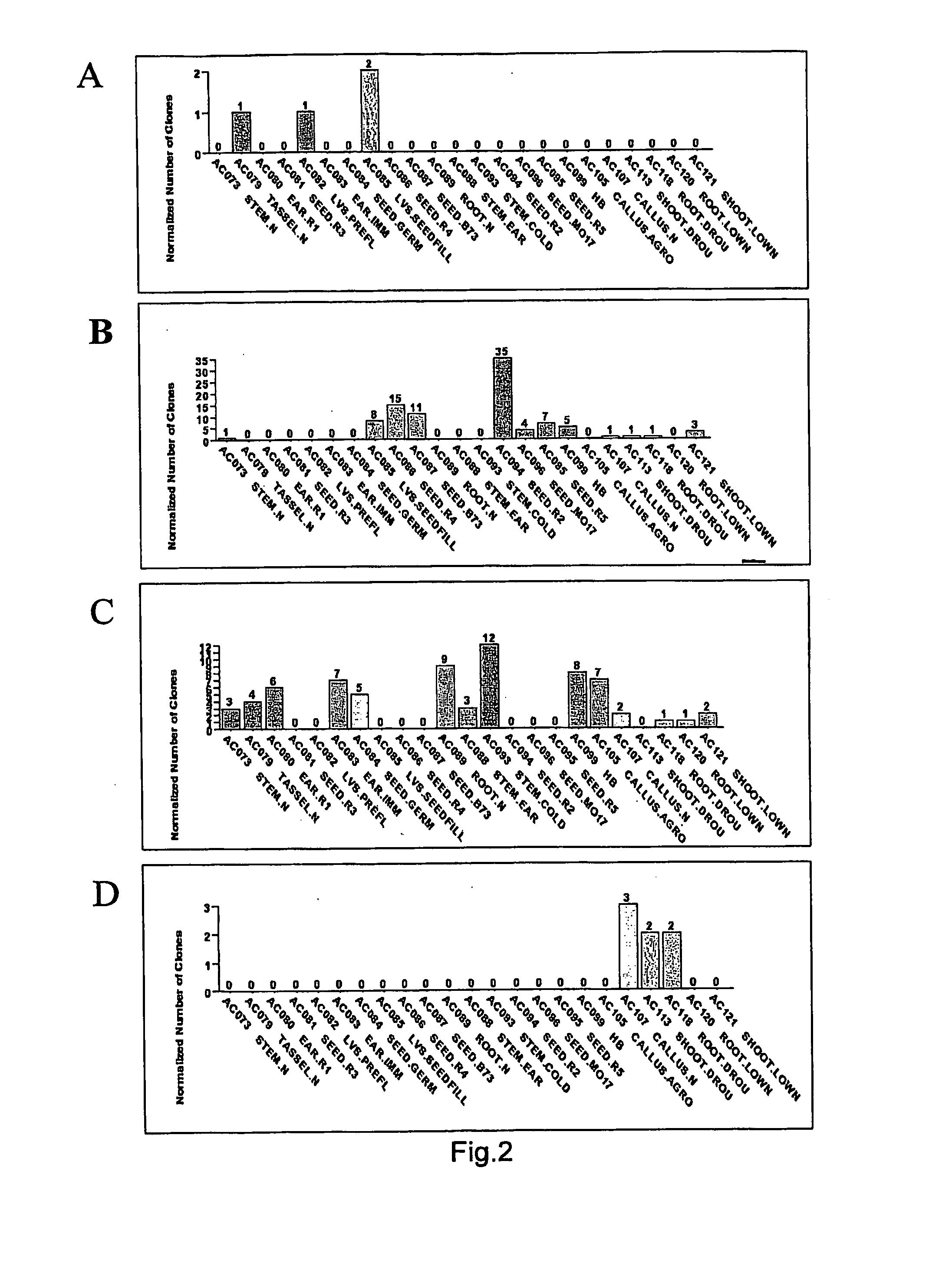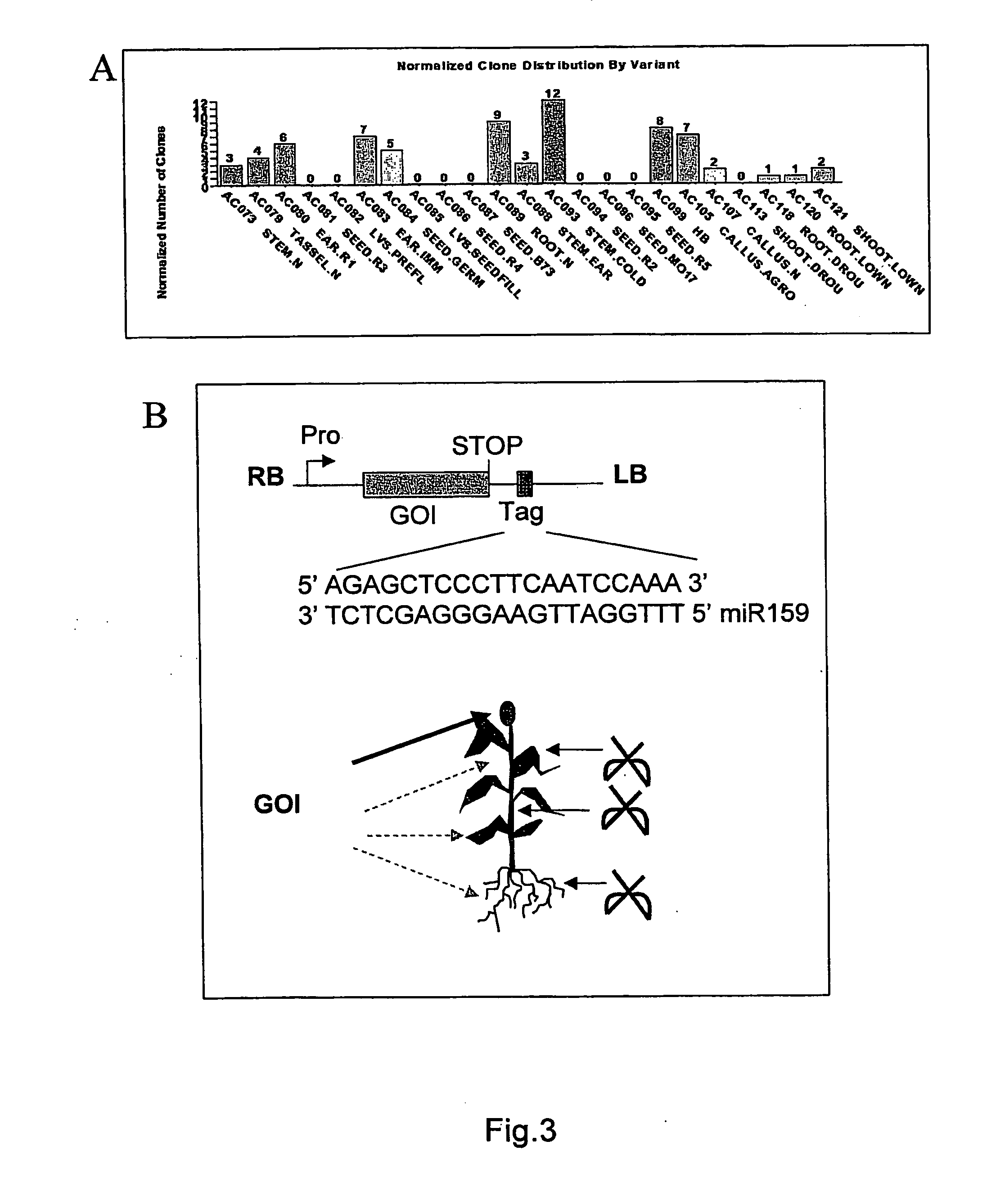Improved Methods Controlling Gene Expression
a gene expression and gene technology, applied in the field of gene expression improvement methods, can solve the problems of not meeting the requirements of regulatory agencies, affecting crops or patients, and difficult to achieve cell or tissue specificity,
- Summary
- Abstract
- Description
- Claims
- Application Information
AI Technical Summary
Benefits of technology
Problems solved by technology
Method used
Image
Examples
example 1
Agrobacterium-Mediated Transformation in Dicotyledonous and Monocotyledonous Plants
[0531]1.1 Transformation and Regeneration of Transgenic Arabidopsis thaliana (Columbia) Plants
[0532]To generate transgenic Arabidopsis plants, Agrobacterium tumefaciens (strain C58C1 pGV2260) is transformed with various ptxA or SbHRGP3 promoter / GUS vector constructs. The agrobacterial strains are subsequently used to generate transgenic plants. To this end, a single transformed Agrobacterium colony is incubated overnight at 28° C. in a 4 mL culture (medium: YEB medium with 50 μg / mL kanamycin and 25 μg / mL rifampicin). This culture is subsequently used to inoculate a 400 mL culture in the same medium, and this is incubated overnight (28° C., 220 rpm) and spun down (GSA rotor, 8,000 rpm, 20 min). The pellet is resuspended in infiltration medium (½ MS medium; 0.5 g / L MES, pH 5.8; 50 g / L sucrose). The suspension is introduced into a plant box (Duchefa), and 100 mL of SILWET L-77 (heptamethyltrisiloxan modi...
example 2
Detection of Reporter Gene Expression
[0537]These experiments are performed by bombardment of plant tissues or culture cells (Example 2.1), by PEG-mediated (or similar methodology) introduction of DNA to plant protoplasts (Example 2.2), or by Agrobacterium-mediated transformation (Example 2.3). The target tissue for these experiments can be plant tissues (e.g. leaf tissue has been described to best support IRES-mediated translation (Urwin, et al., 2000), cultured plant cells (e.g. maize BMS), or plant embryos for Agrobacterium protocols.
2.1 Transient Assay Using Microprojectile Bombardment
[0538]The plasmid constructs are isolated using Qiagen plasmid kit (cat# 12143). DNA is precipitated onto 0.6 μM gold particles (Bio-Rad cat# 165-2262) according to the protocol described by Sanford et al. (1993) and accelerated onto target tissues (e.g. two week old maize leaves, BMS cultured cells, etc.) using a PDS-1000 / He system device (Bio-Rad). All DNA precipitation and bombardment steps are p...
example 3
Expression Analysis for microRNAs
[0545]Analysis is performed on RNA-level (e.g., by Northern blot analysis or real time qPCR). Alternatively expression profiles can be evaluated by the representation of specific miRNA sequences in non-normalized tissue-specifc cDNA libraries and can—for example—be assessed in silico by “counting” the number of cDNA sequences for a specific miRNA in said library.
3.1 Northern Hybridization:
[0546]A suitable method for determining the amount of transcription of a gene is to carry out a Northern blot analysis (by way of reference, see Ausubel et al. (1988) Current Protocols in Molecular Biology, Wiley: New York, or the abovementioned example section), where a primer which is designed in such a way that it binds to the gene of interest is labeled with a detectable label (usually a radioactive label or chemiluminescent label) so that, when the total RNA of a culture of the organism is extracted, separated on a gel, transferred to a stable matrix and incuba...
PUM
| Property | Measurement | Unit |
|---|---|---|
| Fraction | aaaaa | aaaaa |
| Fraction | aaaaa | aaaaa |
| Fraction | aaaaa | aaaaa |
Abstract
Description
Claims
Application Information
 Login to View More
Login to View More - R&D
- Intellectual Property
- Life Sciences
- Materials
- Tech Scout
- Unparalleled Data Quality
- Higher Quality Content
- 60% Fewer Hallucinations
Browse by: Latest US Patents, China's latest patents, Technical Efficacy Thesaurus, Application Domain, Technology Topic, Popular Technical Reports.
© 2025 PatSnap. All rights reserved.Legal|Privacy policy|Modern Slavery Act Transparency Statement|Sitemap|About US| Contact US: help@patsnap.com



